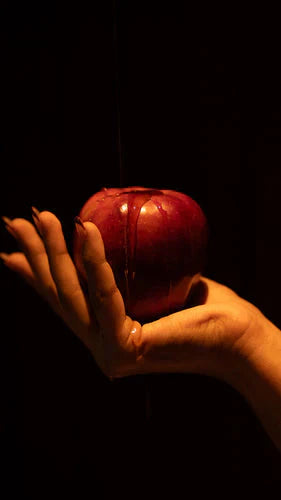
The Pursuit of Pleasure: The not so elusive female orgasm
The Pursuit of Pleasure: The not so elusive female orgasm
“Pleasure” sounds so simple doesn't it? A slice of chocolate cake, a hot cup of filter coffee, watching a sunset or playing a game of rummy, these are all objects of pleasure. Here, we see “pleasure” as an egalitarian concept, one that is deserved by all; the simple joys that life ought to afford us. Orgasms, I would argue, should fall into this category. An orgasm is a physical response to pleasure; a response to either mental or physical stimulation, and sometimes when the stars align, a combination of both. While I’d like to say orgasms are for everyone, data shows that females, or more specifically heterosexual females, largely have not had that pleasure.
A study by Wade, Kremer and Brown in 2005, surveying college students found that 91% of men always or usually orgasm during sexual encounters. In contrast, only 39% of women reported the same. The context of the sexual encounter also affected the data; the number of women reporting reaching orgasm as often as men dropped to 32% during hookups but rose to 72% in relationships. Therefore in relationships, wherein we can assume some amount of empathy and comfort between sexual partners, the orgasm gap reduces.
These numbers continue to shift drastically for women in lesbian encounters as well as solo sexual activities; the gap between partners and genders suddenly closes. In a nationalized study of 52,600 people by Indiana University, Chapman University and Claremont graduate college, the proportion of people who usually orgasmed was shown as such: 65% of heterosexual women, 86% lesbian women, and 95% of heterosexual men. During masturbation, 95% of women report reaching orgasm easily, within minutes.
Clearly, there is a gap. The gap here clearly isn’t due to the fact that female orgasms are elusive. The gap is sexual education/socialization and empathy. Let's rewind to our childhoods, when we were learning about our bodies. I distinctly remember my brother having a word or a name for his genitals, I can’t say the same about mine. Fast forward to school, around the 9th grade when we flipped our science textbooks to the unit of reproduction. The diagram for the male reproductive system allowed us to not just see and learn representations of their internal organs, but also their external genitalia. In the case of the female body, we saw a representation of the uterus but not of our external genitalia. Here, my point is that from an early age we (girls/women/females) are taught to disassociate with certain aspects of our bodies. We, as young girls, go from learning about our bellies and then jumping straight to our thighs or knees; the place between our thighs ignored, sometimes even referred to as “shame shame”. I can’t imagine this aspect of our socialization helped us advocate for our bodies, let alone our pleasure.
The ignorance of female anatomy prevents us as a society from not just closing the orgasm gap but also from working towards a more liberated future. In a report by the NIH, it was found that while typical medical textbooks describe the male anatomy fully, they only describe the female anatomy in comparison, rather than a full description. Further, they also lack descriptions of the clitoris and contain several inaccuracies. A study found that over 60% of college students falsely identified that the clitoris is within the vaginal canal. Here it is important to note that the common thread between lesbian sexual encounters and female masturbation is in-fact the attention paid to the clitoris. This is likely the reason why both these sexual encounters are over 20% more likely to result in an orgasm than heterosexual sexual encounters.
Beyond anatomy, there is also a culture in India and arguably in most parts of the world that teaches young girls and women to be “givers” in all aspects of life, including in the bedroom. In 2016, Debjani Arora wrote that Indian women from a young age internalised that sex was to please men and were therefore only made aware of sexual activities involving vaginal penetration. She writes that a large number of Indian women were unaware that external stimulation was in fact more likely to help them achieve orgasm. Farrah Qader in 2016 said “ Our sanskaars teach us that women are expected to be givers in bed”; she detailed how when expected reciprocity from her male partners when performing oral sex, she received not just abuses but ludicrous responses like “Aaj Mangalwaar hai”; literally translating to “it’s tuesday”, but meaning that one does not perform inauspicious activities on an auspicious day. Stories like these aren’t unusual to women, having sat around and discussed many encounters like this amongst one another. We end each discussion with a sigh and a resignation to a reality wherein we’re likely to experience more encounters like these.
The orgasm gap isn’t just an indication of an imbalance in pleasure, it is indicative of an imbalance of power, of respect and most importantly a lack of empathy. Young girls deserve to feel oneness with their bodies, young women deserve to feel excited to explore their bodies and women all round deserve to feel pleasure. Pleasure might not yet be egalitarian, but I believe it can be. Close the gap.
Love,
Lali


